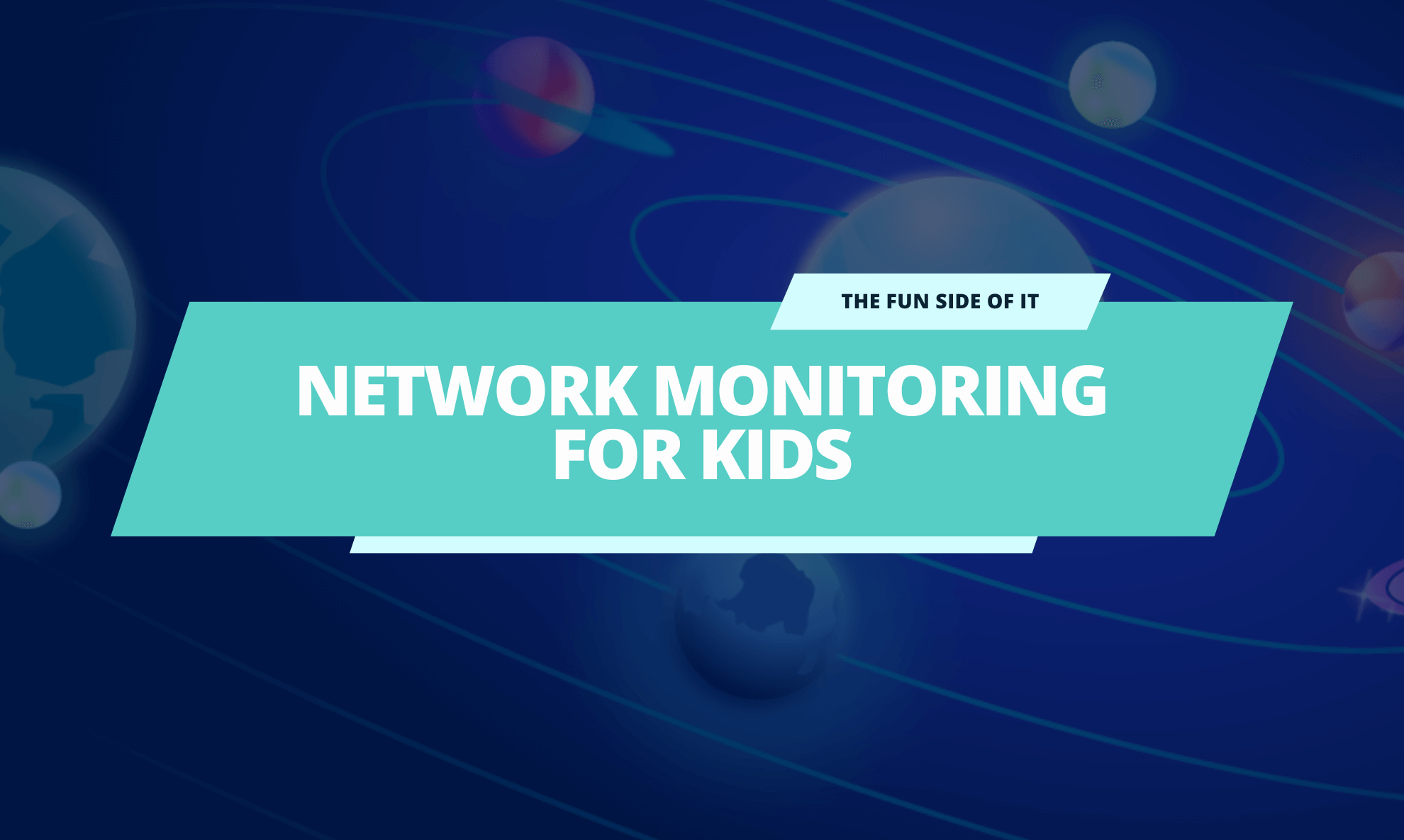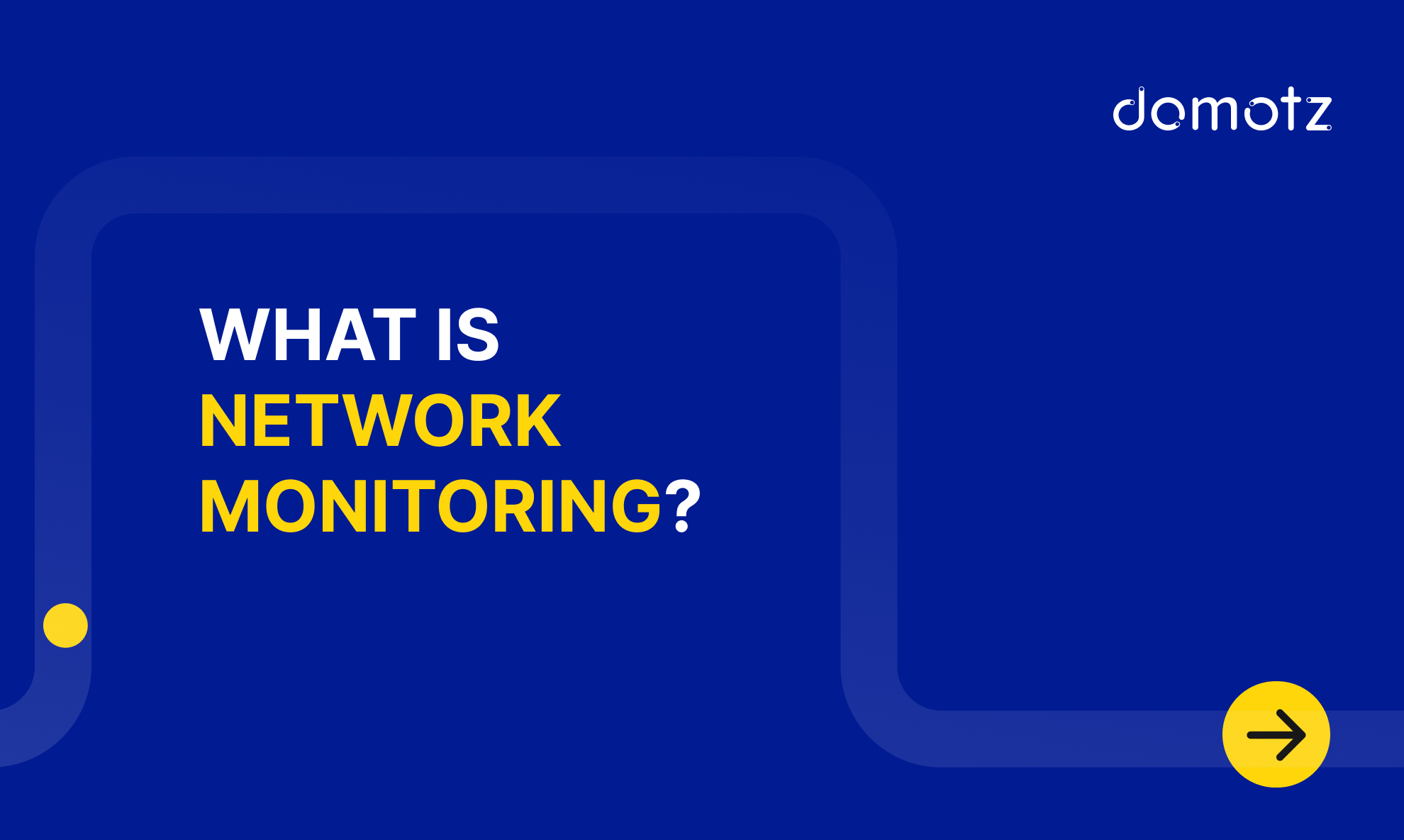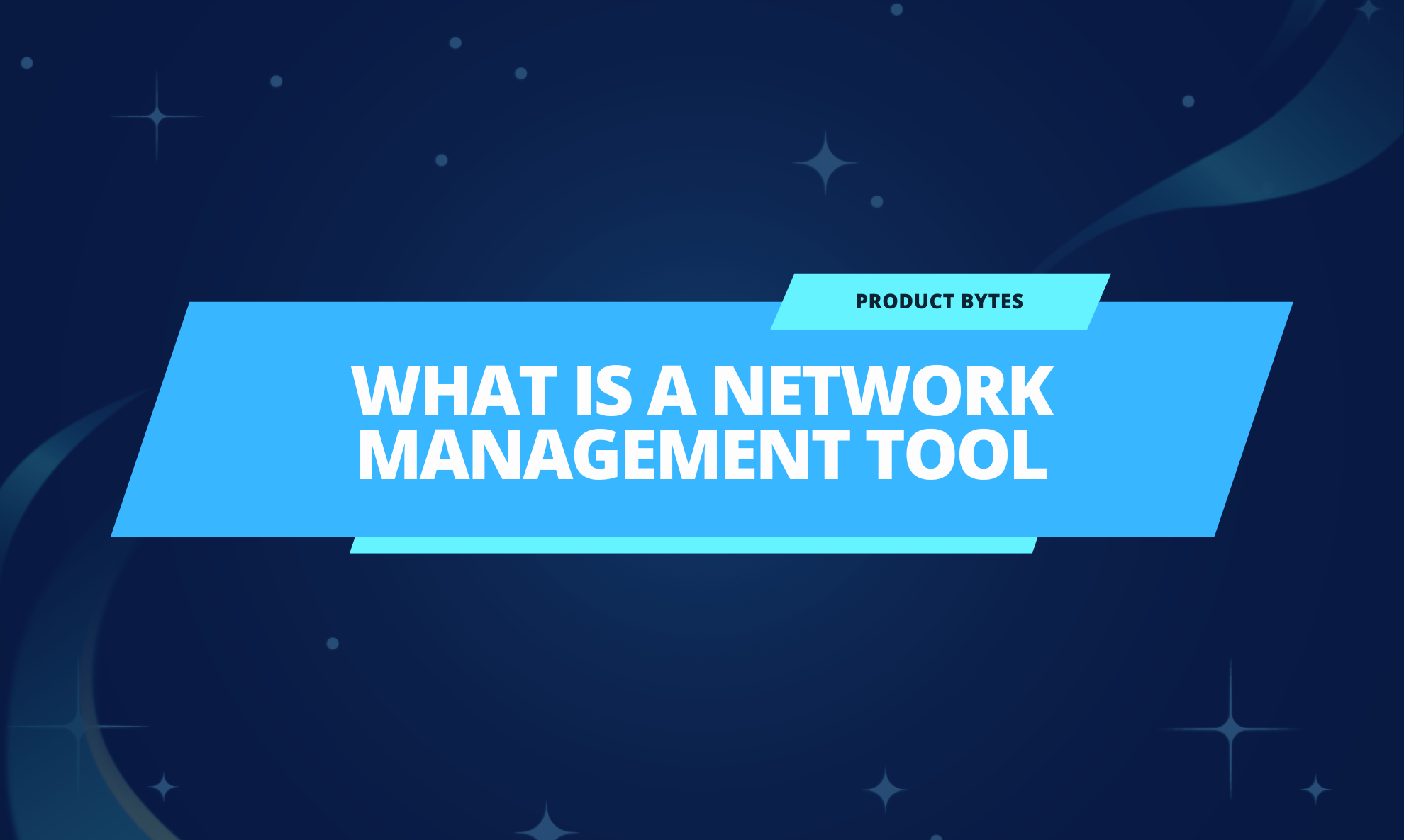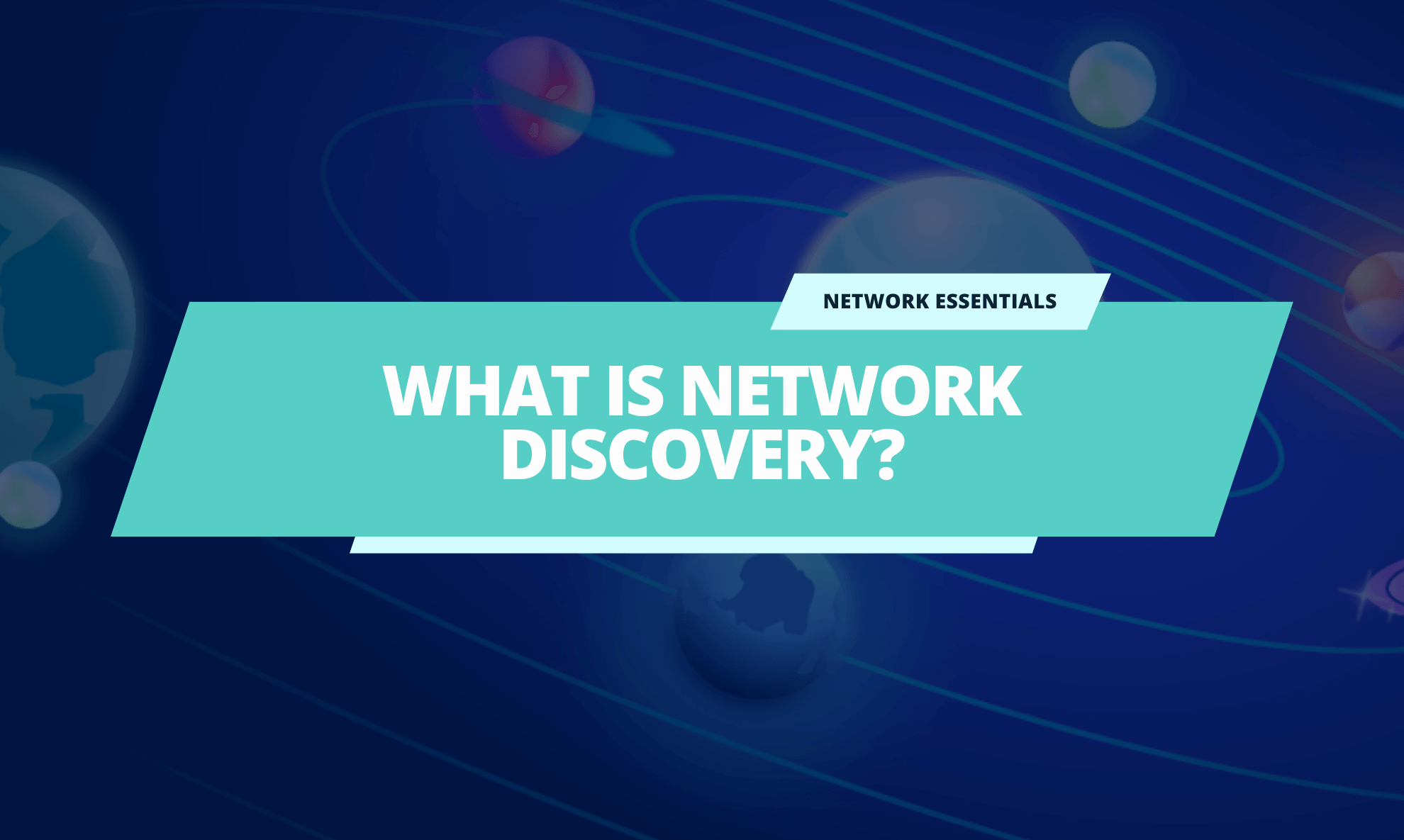Welcome, little ones, to the exciting world of network monitoring!
Today, we’ve decided to embark on a journey to explore these fascinating terms not because we have to but because it’s fun!
Just like you have your toys, games, and friends to keep track of, computer networks have their own set of words to describe what’s happening. So, let’s dive into this playful adventure to discover the colorful and imaginative world of how computers talk to each other!
It’s a bit like having a playdate for computers, and today, we’re going to learn the special words that help us understand how this superhero keeps everything in order.
First things first – what is a network monitoring tool?
In short, a network monitoring tool is software that helps you manage various systems in an efficient way. It can be very useful if you are a Managed Service Provider or an IT Professional because it can cover many different features that make the monitoring process easy and smooth.
Here are some of the features most frequently available on popular network monitoring software like Domotz:
- Network Monitoring
- Network Monitoring Tool
- IT Network Infrastructure
- SNMP Monitoring
- Topology Mapping
- Firewall Monitoring
- Server Monitoring
- Network Monitoring Friends: IP Address, IP Conflict, and more.
What is Network Monitoring?
Let’s imagine network monitoring as the watchful eyes and ears that keep an eye on all the toys (computers) during playtime.
Think of it like having a friendly robot that looks around and listens to all the toys having fun. This robot, or network monitoring, keeps track of everything that’s happening. If a toy needs help or something looks a little funny, the robot quickly notices and lets everyone know.
In simple terms, network monitoring is like a friendly robot keeping an eye on all the toys (computers) to make sure they have the best and safest playtime in their digital world!
Read more about network monitoring.
What is a Network Monitoring Tool?
Well, it’s like having a superhero friend who keeps an eye on everything happening in the computer world. Imagine a guardian angel making sure all the toy cars on the track play nicely, delivering snacks where they need to go, and keeping the playground safe.
Network monitoring is the superhero that watches over computers, making sure they are working well, sharing information, and staying secure.
Read more about network monitoring tools. – link the article why choose network monitoring in 2024
IT Infrastructure – A Fantastic Bridge for Toys
Let’s imagine IT network infrastructure like the fantastic roads and bridges that help toys (computers) travel and play together.
Picture this: your toys want to visit their friends in different parts of your playroom. The roads and bridges they use to get around smoothly are a bit like the IT network infrastructure. It includes all the amazing pathways and connections that help computers talk to each other and share fun things.
So, think of IT network infrastructure as the magical roads and bridges that allow toys (computers) to visit each other easily. Just like well-designed paths make playtime more enjoyable, a strong IT network infrastructure ensures that computers can connect and have the best digital adventures together.
In simple terms, IT network infrastructure is like the fantastic roads and bridges for computers, making it super easy for them to travel and play in their digital playground!
Learn about the Domotz Network Infrastructure & Visibility.
SNMP – Mr. Toy Manager
Imagine you have a bunch of toys in your room, and you want to ensure they’re all in good shape. You have a special friend, let’s call him Mr. Toy Manager. Now, Mr. Toy Manager is like a superhero who checks on your toys and makes sure they’re happy and doing well.
SNMP is like a magical language that Mr. Toy Manager and your toys use to talk to each other. With SNMP, Mr. Toy Manager can ask the toys how they feel, if they need anything, or if they have problems. The toys can also tell Mr. Toy Manager if they’re running low on batteries or too hot or cold.
So, SNMP is a special way for the toys and Mr. Toy Manager to communicate and ensure everything is A-OK in your room!
Read more about SNMP.
Topology Map – Your Treasure Map of Toys
Let’s imagine a topology map like a treasure map for toys.
So, you know how you might have a treasure map that shows where all your favorite toys are hidden in your playroom? Well, a topology map is a bit like that for computers. It’s a special map that helps computers understand how they are connected to each other.
Think of it as a treasure map that shows the paths between toys (computers) and how they can talk to each other. Just like your treasure map guides you to find your toys, a topology map helps computers find the best routes to share information and play together.
In simple terms, a topology map is like a treasure map for computers, showing them the best paths to connect and have fun in their digital playground!
Read more about network topology mapping and how to make a network topology diagram.
Firewall – The Guardian Castle
A firewall is like a magical castle protecting your toys from naughty dragons. In the computer world, it keeps out bad things and only lets in the good stuff.
Just like you have rules at home to keep things safe and fun, a firewall has its own set of rules to protect the computer. It’s like having a guardian dragon who says, “Hey, only good and friendly things can come into the castle, and anything not-so-friendly has to stay outside.”
The firewall is a superhero defender for computers, making sure they stay safe and sound!
Read more about firewall monitoring.
Server – The Helpful Robot
Let’s imagine a server as a friendly and helpful robot in a toy store.
So, you have this magical toy store with lots of toys. The server is like a super-smart robot that keeps track of where all the toys are and helps you find them. When you want to play with a specific toy, you ask the robot, which quickly brings you the toy you want.
A server is a bit like that helpful robot in the computer world. It’s a special computer that stores and shares information. When you want to see a funny cat video or play a game, the server is the friend that goes and gets that information for you so you can enjoy it without any trouble. It’s like having a magical robot friend in the toy store of the internet!
Read more about server monitoring.
Now, let’s explore the main friends of a network monitoring system. They can help troubleshoot issues from a remote.
IP Address – A Special Tag for Toys
The IP address is one of the most important friends of a network monitoring system.
Let’s imagine an IP address like a special name tag for toys.
Just like how every toy in your playroom might have its own unique name tag, computers use something called an IP address as their special name tag on the internet. It’s like a sticker with special numbers that helps toys (computers) find each other and share information.
So, think of it as each toy having its very own name tag. When one toy wants to send a message or a picture to another toy, it uses its name tag, just like saying, “Hey, friend, with the special name tag, let’s play together!”
In simple terms, an IP address is like a toy’s special name tag, helping them recognize and connect with their playtime pals!
IP Conflict – Only One Toy
Imagine you and your friend both want to use the same toy at the same time. That’s a bit like an IP conflict. In the computer world, devices like your tablet or computer have special numbers called IP addresses. It’s like a unique name for each device so they can talk to each other.
Now, if two devices try to use the same IP address, it’s like both wanting to play with the same toy. This can confuse things and not work properly, just like when two friends want the same toy at once. So, we need to make sure each device has its own special ‘name’ (IP address) so they can all play nicely and do their jobs without any problems!”
What is Bandwidth – The Magical Rainbow Slide
Alright, little friend! Imagine you have a magical rainbow slide, and your friends want to slide down it together. Bandwidth is like the width of that slide.
So, let’s say your slide is really wide; that means many friends can slide down simultaneously, and everyone has a great time together! That’s like having a lot of bandwidth. But if the slide is narrow, only a few friends can go down at once, and it might take a bit longer for everyone to have their turn. That’s similar to having less bandwidth.
So, in computer talk, bandwidth is like asking, “How many friends (or pieces of information) can slide down the rainbow slide at the same time?” The wider the slide (more bandwidth), the more friends (data) can have fun together!
Router – The Magical Mail Carrier
Alright, imagine you have a magical mail carrier who delivers your letters and pictures to your friends in different houses. Now, a router is similar to that magical mail carrier for computers.
Picture this: your mail carrier helps you decide which path to take to deliver your mail to your friends’ houses. The router does the same thing for computer information. It determines the best way for messages (or information) to travel from one computer to another.
So, it’s like having a smart friend who helps your messages find the quickest and safest route to reach your friends’ houses. The router is like the superhero guide for computer information, ensuring it gets to where it needs to go!
Latency – Hide-and-Seek
Let’s imagine you’re playing a game of hide-and-seek with your friends. Latency is a bit like the time it takes for your friend to shout, “Ready or not, here I come!” after you’ve hidden.
So, when you say something to your friend, and there’s a little pause before they respond, that’s a bit like latency. It’s the time it takes for your message to travel to your friend and for their response to come back to you.
Imagine playing with walkie-talkies – you press the button to talk, then wait for your friend’s reply. That waiting time is a bit like latency in the world of computers. It’s the small delay when computers talk to each other. So, just like waiting for your friend to find you in hide-and-seek, computers sometimes take a short pause to chat with each other.
Learn more about network troubleshooting.
Downtime – Nap Time for Playgrounds
Let’s imagine downtime, like when your favorite playground is closed for a little while.
So, you know how sometimes your playground needs a break? They may need to fix the swings or plant new flowers. During that time, you can’t play there because it’s closed for a little bit. That time when the playground is closed and you can’t play is like downtime.
In the computer world, downtime is when the computer or a website needs a little break to fix things, update, or get ready for more fun. It’s like saying, “Hey, the computer is taking a short nap or doing some chores, so we can have even more fun when it wakes up!” Just like your playground needs a break to be even more awesome, computers sometimes need downtime to be their best selves!
Learn more about network performance.
Want more fun?
Read our blog post on IT memes and jokes!
Conclusion
So, there you have it, little ones! The world of network monitoring is easier than it sounds. Just like you learn to share toys, computers have their way of sharing information with friends. These terms are like the building blocks of a big, colorful playground where computers play and work together. Happy learning!
Further reading:



